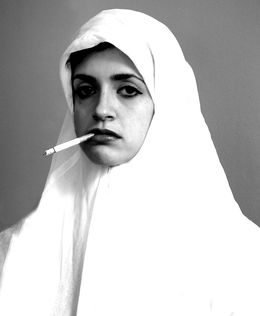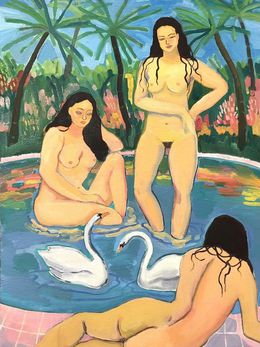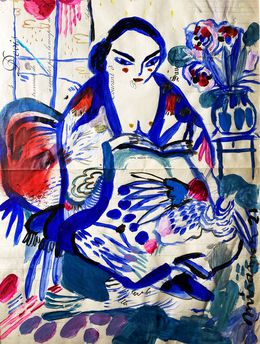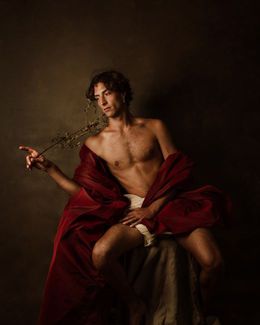
Meet Studio Iconographia
Feminist Photographers and Art Directors

Studio Iconographia, Eat my Dust, Autoportrait en Bugatti d'après Tamara de Lempicka, available on Artsper
The Studio Iconographia project, led by Armâne Magnier and Clémence Rolland, is independent and impactful. Shaking up questions of gender and representation through their photography, the duo combines art history and modern messaging in their production. Supported by research, Iconographia's portraits gradually immerse the viewer in a painterly artistic universe where everyone finds their place. Inspired by women painters too often forgotten by history, Studio Iconographia proposes a rereading of masterpieces dating from the Renaissance to today. With Artsper, get to know this duo committed to inclusive and accessible art!
1. Hello Armâne and Clémence! Can you tell us about your background, between art history and photography? What made you decide to embark on the Studio Iconographia adventure?
We both studied history and art history at the École des Chartes and the Sorbonne, and then worked together as curators in charge of heritage promotion in a large cultural institution. It was in 2018 that we worked together on a photographic project for the first time! From the beginning, we noticed a real creative and intellectual stimulation between us and quickly we only wanted to create together. Very quickly, we adopted a pictorial style and a strong artistic direction, coming from our respective studies in art history. At the end of 2020, as we were receiving more and more orders, we had the opportunity to leave our respective jobs to fully dedicate ourselves to Iconographia: we then created the company!
2. The name of your duo, Iconographia, is evocative of your passion for art history and your expertise in this discipline. Do you think it is the duty of artists to interact with art history? Make it more readable, more accessible?
Indeed, Iconographia means at the same time the art of drawing, the knowledge of the arts, the study of a subject and its representations. The choice of this name was obvious in view of our inspirations and our approach. If we want to share our sources and make our social networks a place of popularization on the history of art, we do not think, however, that it is, in a general way, a role that it falls to the artists to fill, but rather a work led by the cultural institutions, the professionals of the museums, the culture, the researchers, that we come to supplement! In any case, we think it is very important to make this discipline more accessible and inclusive, and to open the museum to other horizons.
3. In your work, you highlight those individuals - often women - who have been invisibilized by art theorists and/or whose pieces have been attributed to male peers. Did this vocation to propose a rereading of historical masterpieces come as a natural step for you?
Absolutely! While looking for models to identify with, we found our happiness in the works of women artists. We have found that in the work of these artists we find new figures, subjects, compositions that offer us great inspiration. In particular, as part of our "Paintresses" project, we interpret, in photography, a selection of works by women painters that particularly speak to us. The Self-Portrait as Allegory of Painting by Artemisia Gentileschi (1593-1656), and the Self-Portrait as Bugatti by Tamara de Lempicka (1898-1980), are the first two photographs in this ongoing series. It is a way for us to pay homage (or femmage!) to still unknown figures and to register our work, resolutely feminist, in a heritage.
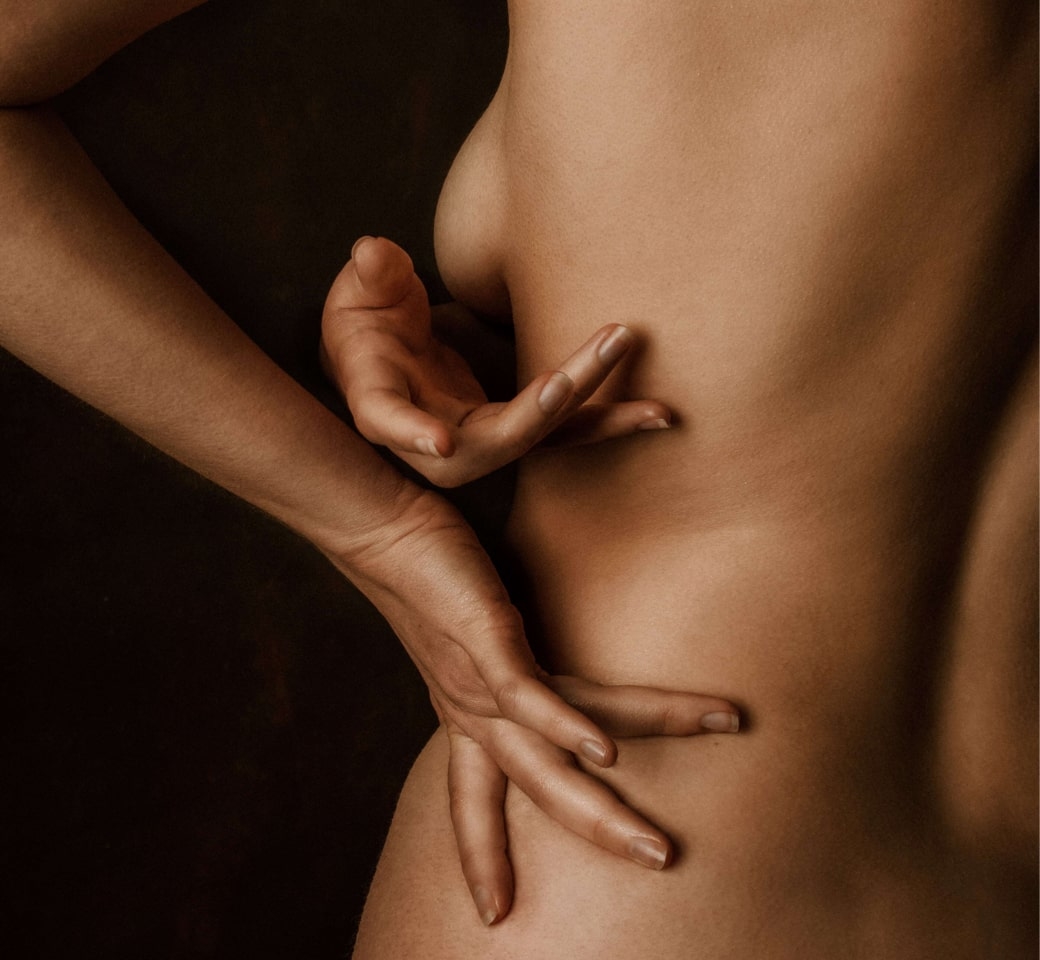

On the Left: Détail, I. On the Right: Marie-Madeleine pénitente, available on Artsper
4. The portrait is your favorite genre. According to you, what is the strength of a portrait?
We do a lot of portraits, and it is important for us to emphasize that each photograph is the result of a true collaborative effort between Iconographia and our model. In our work, the portrait takes many forms: a detail of a body is as much a portrait for us as a face or a look. It is sometimes in anonymity that we find the most vulnerable and therefore the strongest portraits.
5. What is your favorite period in art history and why?
Our tastes are quite heterogeneous and cross the ages. We are equally inspired in composition and subject matter by the Renaissance, Pre-Raphaelitism, 1970s psychedelic art, and Flemish painting. Stylistically, we must admit that we have a weakness for Caravaggio's chiaroscuro. It is also an element that we find in most of our photos from the point of view of the treatment of light!
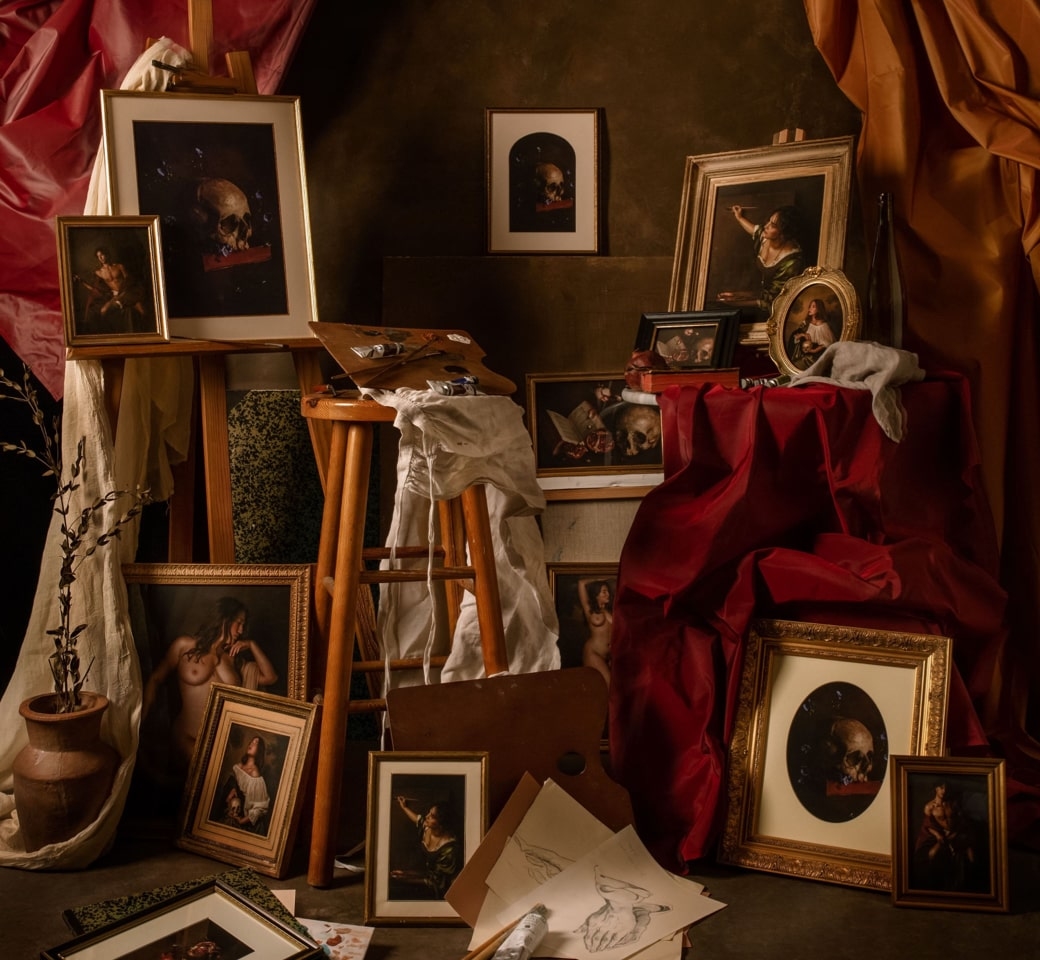
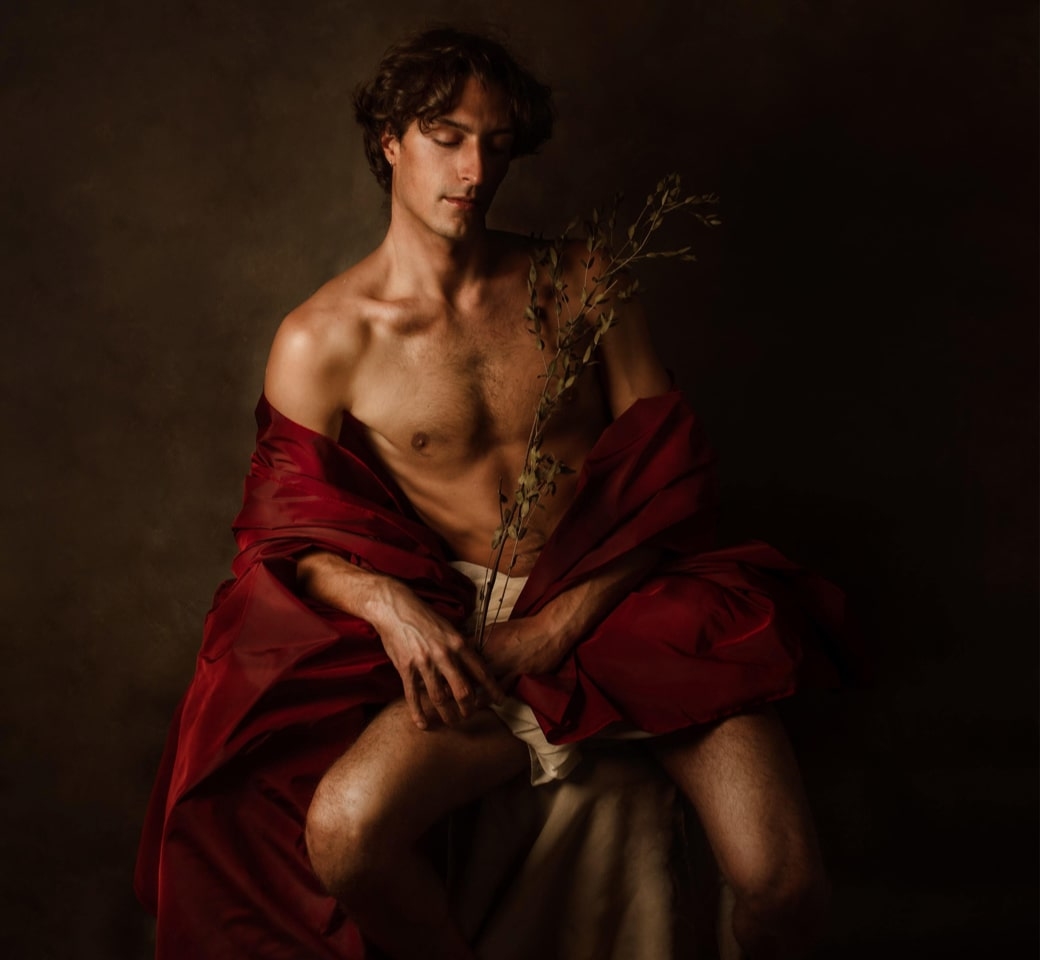
On the Left: Cadres Anciens. On the Right: Saint Jean-Baptiste d'après le Caravage
6. Do you have a favorite book or movie to recommend to our readers?
We both loved Moi, Tituba, sorcière noire de Salem by Maryse Condé. It was for us a real slap in the face, a powerful novel that we read in one go without being able to let go. As far as cinema is concerned, Park Chan-Wook's Mademoiselle blew us away with its impeccable photography: nothing is left to chance and each shot is a magnificent and impeccable picture.
7. Finally, can you tell us about the project on which you preferred working so far ?
Lately, we have been doing a project around framed prints in antique frames. The materiality of the work occupies an important place in the artistic work we do. We make all our prints ourselves in our studio, on paper that we choose for its pictorial grain and archival quality. We went further in this process by framing a selection of photographs in antique frames that we had found and that were magnified by the work of our wonderful framer, Jeanne Plancke, who has her workshop in the 9th arrondissement. It was a real pleasure to control the process from A to Z, from the shooting to the framing. This project was also a way for us to spin the metaphor between the pictorialism of our photographs and their assimilation to paintings, to reinforce the comparison with painting.
Their favorite artworks
